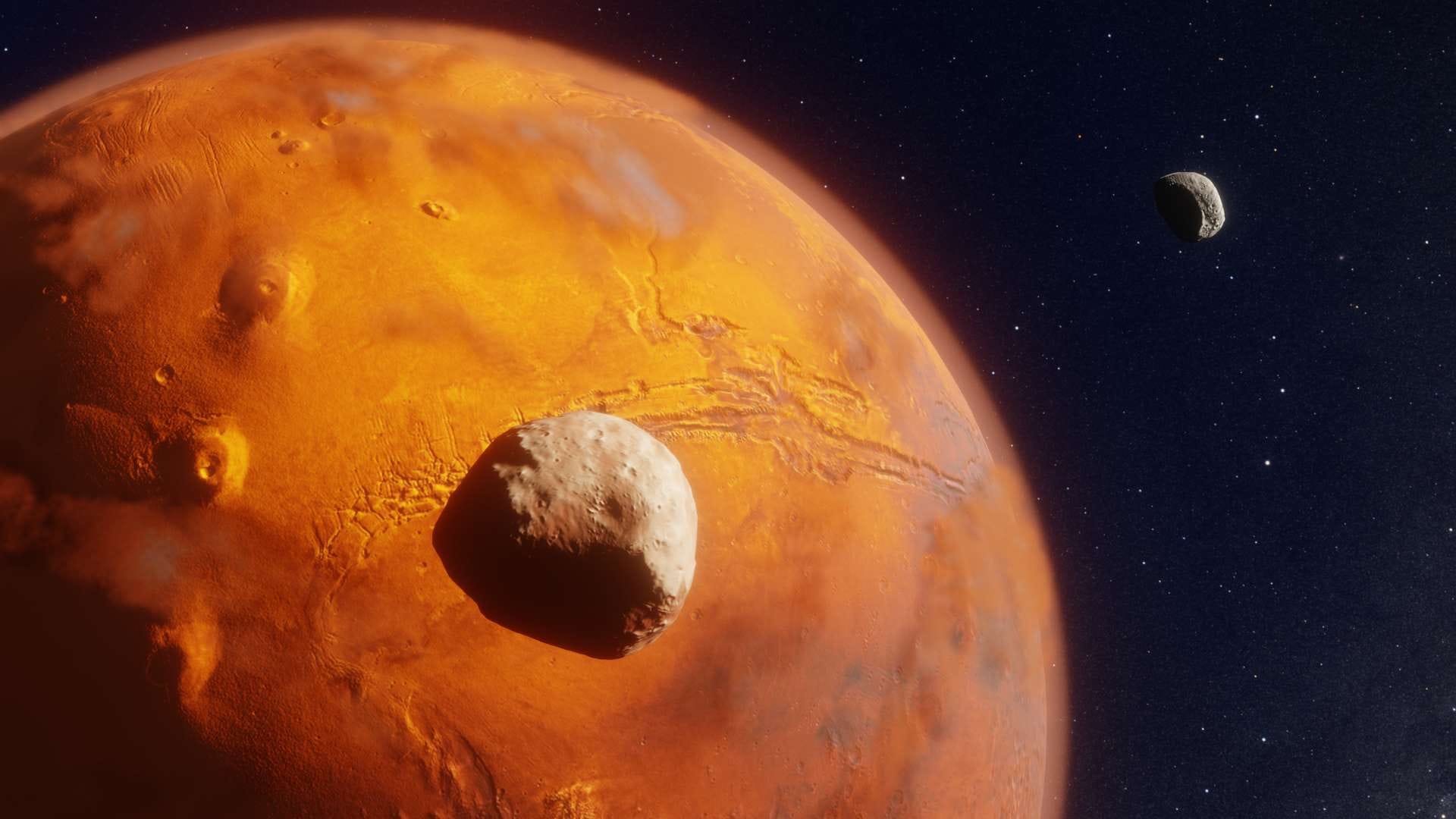Mars could create its two satellites by ripping an asteroid apart

A new study suggests that Mars' satellites, Phobos and Deimos, may have formed from debris from an asteroid that came too close to the Red Planet and was torn apart by its gravitational forces.
Here's What We Know
Computer simulations conducted by scientists at NASA's Ames Research Center have shown that the satellites of Mars could have formed from debris from a large asteroid that approached the planet and crossed its Roche limit. This is the distance at which Mars' gravitational forces became too strong and tore the asteroid apart.
The study found that much of the debris remained in Mars' orbit, where it continued to collide and shred, forming a disc around the planet. From this disc, Phobos and Deimos formed. This model explains why the satellites' orbits are nearly circular and coincide with the equatorial plane of Mars.

A computer model simulating the trajectory of asteroid fragments torn apart by the gravity of Mars
It had previously been suggested that the satellites could have formed as a result of an impact on the surface of Mars, but the new hypothesis offers an alternative explanation for their origin that also takes into account their different heights above the planet's surface.
In 2026, the Japan Aerospace Exploration Agency (JAXA) plans to launch the Martian Moons eXploration (MMX) mission, which will return samples of Phobos to Earth for further study. The data will help confirm or refute the new theory by determining the chemical composition of the satellites. If traces of Martian rocks are found in the samples, this will support the hypothesis that they were formed as a result of an impact ejection. Otherwise, their composition will be closer to asteroidal, which will confirm the new model.
Source: Space